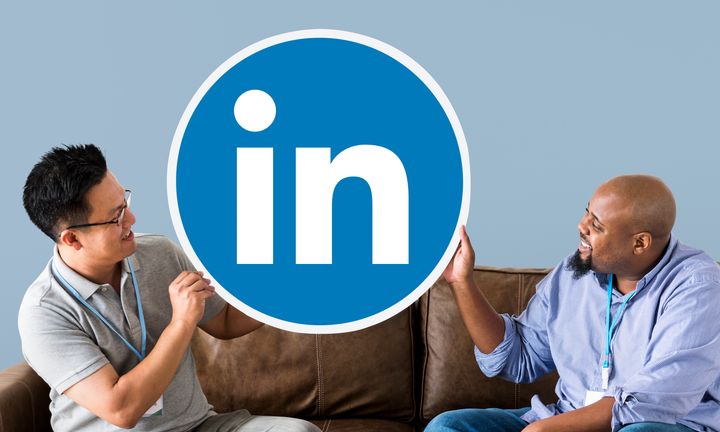What is a Re-engagement Campaign and Why is it Important
The significance of re-engagement campaigns extends beyond mere customer reactivation; they are a strategic component of sustaining a brand's market presence. By effectively bringing back lapsed customers, businesses enhance their revenue potential and strengthen customer loyalty.

A re-engagement campaign serves as a strategic approach to reconnect with customers who have shown a lapse in interaction with a brand. With the digital marketplace becoming increasingly saturated, capturing and retaining consumer attention is more challenging than ever.
These campaigns are crafted to remind customers of the value they find in a brand, using personalized outreach to spark their interest once again. Through such targeted efforts, brands aim to convert inactivity into active engagement, leveraging the latent potential of previous interactions to bolster their marketing effectiveness.
This post will discuss the idea of a re-engagement campaign and why it is important for your brand.
What is a Re-engagement Campaign
A re-engagement campaign targets individuals who have previously interacted with a brand but have become less active or disengaged over time. The primary goal is to reignite interest and encourage them to re-establish interaction, whether through purchasing products, engaging with content, or participating in services.
These campaigns use strategic communication and marketing tactics, including personalized emails, targeted social media ads, special offers, and reminders of the value the brand offers. By analyzing customer data, brands identify disengaged customer segments and tailor messages to address their specific reasons for disengagement, effectively addressing any barriers to re-engagement.
Also Read: How to Engage Inactive Email Subscribers with Re-engagement Giveaway Campaigns
Successful re-engagement campaigns boost customer retention and enhance loyalty and lifetime value by reminding individuals of the benefits and satisfaction associated with the brand's offerings. Through thoughtful execution, re-engagement campaigns play a crucial role in a comprehensive marketing strategy, ensuring that a brand remains relevant and top-of-mind among its audience, ultimately contributing to sustained business growth.
Why Should You Run a Re-engagement Campaign?
Running a re-engagement campaign is crucial for several reasons. First, it's more cost-effective to re-engage existing customers than to acquire new ones, as the foundation of trust and familiarity has already been established. These campaigns can significantly increase customer lifetime value by reigniting interest among individuals who have shown previous engagement but have lapsed in their interaction.
Second, re-engagement efforts help to clean up your contact lists, allowing for more accurate segmentation and targeting by identifying active versus inactive users. This leads to improved deliverability and engagement rates across marketing campaigns.
Re-engagement campaigns offer valuable insights into customer preferences and behaviors. By analyzing the response to these campaigns, businesses can identify why certain segments become disengaged and adjust their overall strategy to prevent future drop-offs. This feedback loop is essential for refining product offerings, customer service, and communication strategies to better meet the needs of the target audience.
Also, re-engagement campaigns strengthen brand loyalty by reminding customers of the value and benefits of the products or services offered. A well-crafted message can rekindle interest and motivate a return to active engagement, thereby fostering a more engaged and loyal customer base. This enhanced loyalty not only boosts immediate sales but also contributes to positive word-of-mouth, extending the brand's reach and impact.
How to Run a Re-engagement Campaign Using Giveaways
1. Identify Your Target Audience
The foundation of any successful re-engagement campaign is understanding who you’re trying to reach. Analyzing customer data allows you to identify those who have drifted away over time. This includes customers who have stopped purchasing, opening emails, or engaging with your brand on social media. The key is to define what “less engaged” means for your business. This precision enables you to tailor your campaign specifically to the needs and behaviors of this group, increasing the likelihood of rekindling their interest.
2. Set Clear Objectives
Setting specific, measurable goals for your re-engagement campaign provides direction and a way to measure success. Objectives might include increasing the open rate of emails by a certain percentage, enhancing website traffic, or converting several previous customers into repeat buyers. Clear objectives help in crafting a focused campaign strategy and in evaluating its performance, allowing for adjustments and optimizations along the way to ensure the desired outcomes are achieved.
3. Choose an Appealing Giveaway
The centerpiece of your campaign, the giveaway, must be carefully selected to ensure it resonates with your target audience. It should not only be valuable but also relevant to their interests and needs, effectively serving as an incentive for re-engagement. Whether it’s a popular product, a service your business offers, or an exclusive experience, the giveaway should remind your audience of what they’ve been missing. This relevance and perceived value drive participation and renew interest in your brand.
4. Create Compelling Content
Crafting content that highlights the value of the giveaway and the ease of participation is crucial. This content should underscore the benefits of re-engaging with your brand, from access to quality products or services to being part of a community. Personalization is key; your message needs to feel tailored to the disengaged segment, making them feel valued and understood. Compelling content not only informs but also excites, increasing the likelihood of re-engagement.
5. Promote Your Campaign
Effective promotion ensures your message reaches the intended audience. Utilizing a mix of channels, such as email and social media, allows you to cover more ground. Email campaigns are direct and personal, ideal for reaching out to individuals who have previously engaged with your brand. Social media, on the other hand, offers a broader reach and the opportunity for viral sharing. Tailoring your promotion strategy to the habits and preferences of your target audience ensures your campaign gains traction and visibility.
6. Streamline the Process with Giveaway.com
Simplifying the participation process is essential for maximizing engagement. Complex entry requirements can deter potential participants. Online giveaway tools like Giveaway.com offer a streamlined solution, making it easy for users to enter your giveaway with minimal effort. Giveaway.com assists in efficiently managing the giveaway, from entry collection to winner selection, ensuring a smooth and enjoyable experience for both the brand and the participants. This ease of participation is key to re-engaging customers and rekindling their interest in your brand.
How to Use Giveaway.com to Create a Re-engagement Campaign to Win Back Lost Customers
Giveaway.com is a powerful marketing platform that enables you to run giveaway campaigns to increase user interaction and promote your business. It uses Provably Fair Algorithm technology to ensure that each giveaway's outcomes are fair and transparent.
Giveaway.com boosts your marketing efforts and ensures a viral campaign by combining the power of freebies with the automated power of AI, which assists you in generating the appropriate giveaway titles, descriptions, and posters for your marketing campaign.
Creating a re-engagement giveaway campaign to win back lost customers is simple with Giveaway.com. Sign up and create your project profile, select the giveaway mode, provide the essential details about the giveaway and how to participate, and create your re-engagement giveaway campaign.
Here is a boilerplate template of how a brand used a discount offer as a re-engagement campaign to bring back lost customers and turn them into paying customers.
This is a 50% discount re-engagement campaign that requires participants to complete these simple tasks to claim the prize. The tasks for participants to earn the reward are simple:
- Visit the business website
- Make a purchase by selecting an offer
- Share the giveaway with others.
As you see in the image, this is a simple re-engagement campaign that targets lost customers by offering them a 50% discount on their purchase once they complete the task stated above.
The campaign is a timed draw contest in which the prize can be manually distributed to participants who completed the task.
Easy, right?
Click here to create a similar re-engagement campaign to win back your lost customers.
Conclusion
The significance of re-engagement campaigns extends beyond mere customer reactivation; they are a strategic component of sustaining a brand's market presence. By effectively bringing back lapsed customers, businesses not only enhance their revenue potential but also strengthen customer loyalty and brand affinity. At a time when customer retention is as crucial as acquisition, re-engagement campaigns emerge as a pivotal tool in the marketing arsenal, ensuring that a brand remains relevant and top-of-mind among its audience.




